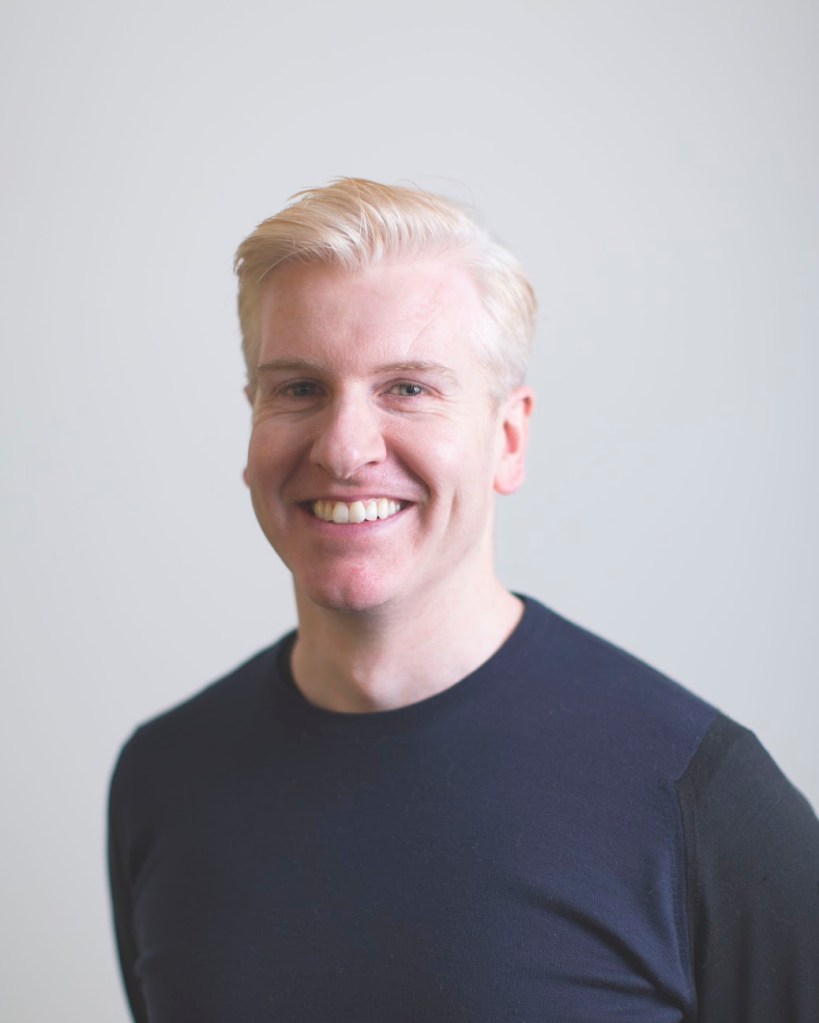Save 50% on a 3-month Digiday+ membership. Ends Dec 12.
From music festivals to agency overhauls: Greg James is driving momentum at Havas Media Network North America

Greg James’ time orchestrating music festivals in London was the ultimate dress rehearsal for his headlining act in New York 14 years later: revamping Havas Media in North America.
Granted, likening festival planning to corporate restructuring might be a bit of a stretch, but dismissing the comparison entirely would miss the harmony. Swapping venues, sponsorships, and talent for corporate culture, structure, and services — it’s all just a different kind of orchestration for the CEO at Havas Media Network North America.

Six months into his new role, James appears to be fine-tuning for the main event following a successful opening act. And in many ways, he’s been prepping for this gig for a while now: after a stint as Havas Media’s global head of strategy from 2018-22, he moved into global chief transformation officer duties until he was tapped in January to replace Greg Walsh.
Since then, Havas has clinched five accounts — nearly a third of those it pitched for — including heavyweights like SunLife, Famous Footwear, and Lundbeck.
Existing clients have also bought into the new direction; nearly a third (30%) have diversified their spending within the network beyond just media buying. Behind the scenes, James has orchestrated the largest talent investment in Havas history, spanning 1,000 people across its five offices in Toronto, New York, Boston, Miami, and Chicago, as well as online training for fully remote workers. He didn’t share the exact numbers, but the agency did confirm to Digiday that it is well over six figures. That will fund a program which took two and a half months to train execs, even closing some offices for several days to get it done right.
“When you’ve got a thousand things that you want to fix, what I’ve learned from having to guide strategy over the years, is that it’s important to pick two or three big pieces that you want to set your vision towards initially,” said James. “That way you don’t get lost in the weeds in the first few months.”
Looking ahead, the plan is to build on these foundations.
Staff morale? Internal metrics show people are happier about the network’s direction and their own contributions – notably after a bit of a dark period under his predecessor (more on that later). And media partners? Commercial deals with the likes of Amazon and NBC are stronger, thanks in part to a reverse upfront hosted by the agency in March to showcase its new direction. What about CMOs? They get smaller, more hands-on teams with execs who can really dive into their accounts. How small? It depends on the client, but this new approach is audited to deliver only what a client needs, nothing they don’t.
“I want us to capitalize on the momentum we’ve started to get,” said James. “The third quarter is always big for planning and pitches on the client front. I’m hoping we’ll start to see bigger, bigger wins.”
Havas and everyone else, in all fairness.
Navigating growth, talent and transformation
These are dicey times for agency bosses. They’re in a “grow-or-die” industry where
they must continually reinvent themselves to stay relevant. This has thrown a bunch of challenges at holding companies: managing people, centralizing efforts, and making smart capital investments. According to James, people management is the most critical factor. No surprise there — staff costs make up the bulk of an agency’s expenses, including Havas Media Network. Yet, it continues to stump many agency CEOs, who struggle to attract, retain, and promote talent that can truly add value to their clients.
“Can he make the shift to being someone that can be an inspirational but also operational, financially oriented CEO? He may very well be able to do it, because he is a very smart guy,” observed one former Havas Media exec. “You’ve got to be pretty damn good at pretty much everything. You can have your strengths, you can have your backgrounds. But you’ve got to be pretty good at everything, or at least to have a working knowledge of everything – and then have an exceptional team around you.”
For James, it all starts with the leaders. They set the tone and culture. Hence, a flurry of changes across the network. Over the last four months, there have been strategic hires and fires, leaving a team committed to a new leadership charter. That includes Noah Vardon and Amanda Dyke, who were appointed to the respective positions of chief client officer and managing partner of marketing and communication for the network.
If James’ plan pans out, from the leadership overhaul to the training, the latter part of the year will feel like a reset for Havas employees and clients. And while it’s a big “if,” it’s arguably not as big as it might be at other media networks because Havas has operated under one P&L since 2017.
In the intervening years, centralization is increasingly the norm there, meaning less bureaucracy, fewer political hurdles, and more opportunities to support better business choices and client services. Oh, and don’t forget, this way there are also lower costs per dollar of revenue. For years, Havas has employed what it calls “The Village” approach – a conscious effort to break down walls among the multiple agency brands within its network, creative and media.
It’s not a perfect model. Havas Media Network has had its share of problems in the U.S. Not only did it cut 12% of its headcount, but it also lost 15 major clients, including two worth over $100 million in billings. Yet, Havas’ focus on centralization hasn’t been a complete bust. In fact, it’s likely been a key factor in James’ early successes and will probably continue to be.
Now, James has evidence to show why and how his approach to agency pain points can pay off. This track record and the confidence it brings will be crucial during the second half of the year when more media billings are up for grabs.
So when CMOs ask whether Havas can grow with their businesses, execs there can say they’re already doing it with brands like Harman, which has gone from paying only for media planning and buying in 2022 to Havas acting as a consultant on its data strategy and technology stack less than two years later.
Conversations like this are never easy, but they’re made that bit easier when the business has clear, aggressive plans to grow. CMOs there aren’t so frugal. Unsurprisingly, James has tried to keep Havas squarely in the crosshairs of those businesses. He added: “Our clients tend to be in the middle of the transformation journey as a challenger, and tend to want an agency that’s really trying to solve problems that may not have been solved before.”
Which is to say, his Havas Media Network in the U.S. isn’t really the place for those CMOs looking for a bigger holding company to focus mainly on buying ads. That’s a tacit admission of the space Havas occupies in the broader market, from James. But it’s also a candid assessment of where the network’s opportunities are — being one of the biggest of the smallest media buying networks.
Big or small — the end goal is the same for agencies: delivering services that either improves or grows a brand’s business. Obvious as it is, it’s also difficult to do for a sustained period of time, particularly for agencies that are continuously being squeezed on fees by businesses.
James’ journey: transforming Havas amid challenges
To understand James’ rise to his current post, it’s important to understand who and what came before. When Colin Kinsella was replaced as North American CEO in early 2021, Havas Media Network’s global CEO Peter Mears ultimately turned to Greg Walsh, who had been COO and chief transformation officer. Walsh’s tenure until the end of 2023 was not easy, according to one former insider at the network. He’s said to have had a strong financial acumen but didn’t present well as an inspirational leader.
Walsh also sought to bring in executives from outside the industry to shake up the established norms of media agencies, in hopes of galvanizing new approaches. In August 2023, Walsh appointed HMN’s first chief revenue officer, Joy Allen-Altimare, to oversee most of the departmental leaders that had reported to Walsh, and put her in charge of, among responsibilities, client management and new business. But the move rankled many of the veterans of the shop, which was losing clients faster than it was winning them, including Bristol Myers Squibb and Papa John’s.
James is said to have immediately reassigned Allen-Altimare within days of taking over as NA CEO. Rumor has it that it was even done publicly, as a not-so-subtle message to those at HMN — who were thinking of leaving the agency after the turbulence of Walsh’s tenure — that operations would be getting back to something more akin to a media agency structure.
Similarly, according to one former executive, Walsh also hired a chief people officer, Jeana Muñoz, from Accenture in 2022 who wasn’t as well connected in the media agency world. This executive said it wasn’t working either, and James also moved to replace her in early 2024.
“It was a number of people coming to Greg James within minutes of him being appointed CEO, saying, ‘This place is a nightmare. There’s this wrong, there’s that wrong,’” said the executive who declined to speak for attribution. “And him taking all that in very quickly, going, ‘We’re gonna lose the whole place if we don’t do something, or some things, pretty quickly and pretty boldly.”
As for James, this executive said he’s well respected within HMN, and well liked – known for his skills as a creatively-driven, content-savvy strategist. James was the principal architect of HMN’s long standing Meaningful Media approach to investment, introduced in 2018 and still around today.
So far, this high-wire act seems to be going as well as it could for James. But bigger challenges lie ahead, including the prospect of Havas being spun off from parent group Vivendi to run as a separate listed company.
“It comes up in conversation with clients and we talk to them about it,” said James. “What’s fortunate for me in North America, is that even if we spin out and have independence, that will be a huge benefit to me because we’ve got so much space to grow here. It will unlock potential for us when it comes to growth and acquisitions and talent.”
Speaking of acquisitions, he did not rule them out.
“We’re looking at M&A in high growth areas like performance marketing, commerce and content,” he continued.
More in Marketing

Agencies push curation upstream, reclaiming control of the programmatic bidstream
Curation spent much of this year in a fog, loosely defined and inconsistently applied. Agencies say they plan to tighten the screws in 2026.

‘A trader won’t need to leave our platform’: PMG builds its own CTV buying platform
The platform, called Alli Buyer Cloud, sits inside PMG’s broader operating system Alli. It’s currently in alpha testing with three clients.

Why 2026 could be Snap’s biggest year yet – according to one exec
Snap’s senior director of product marketing, Abby Laursen talked to Digiday about its campaign automation plans for 2026.







